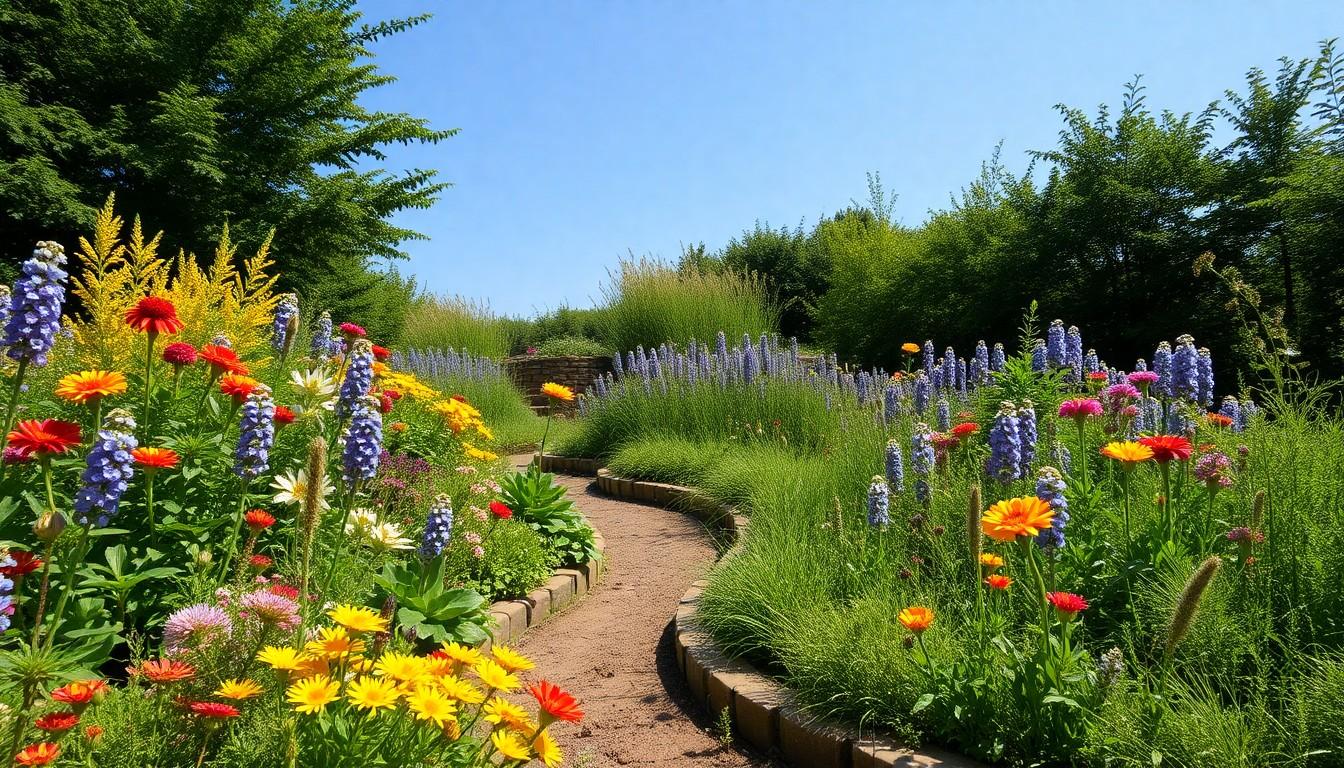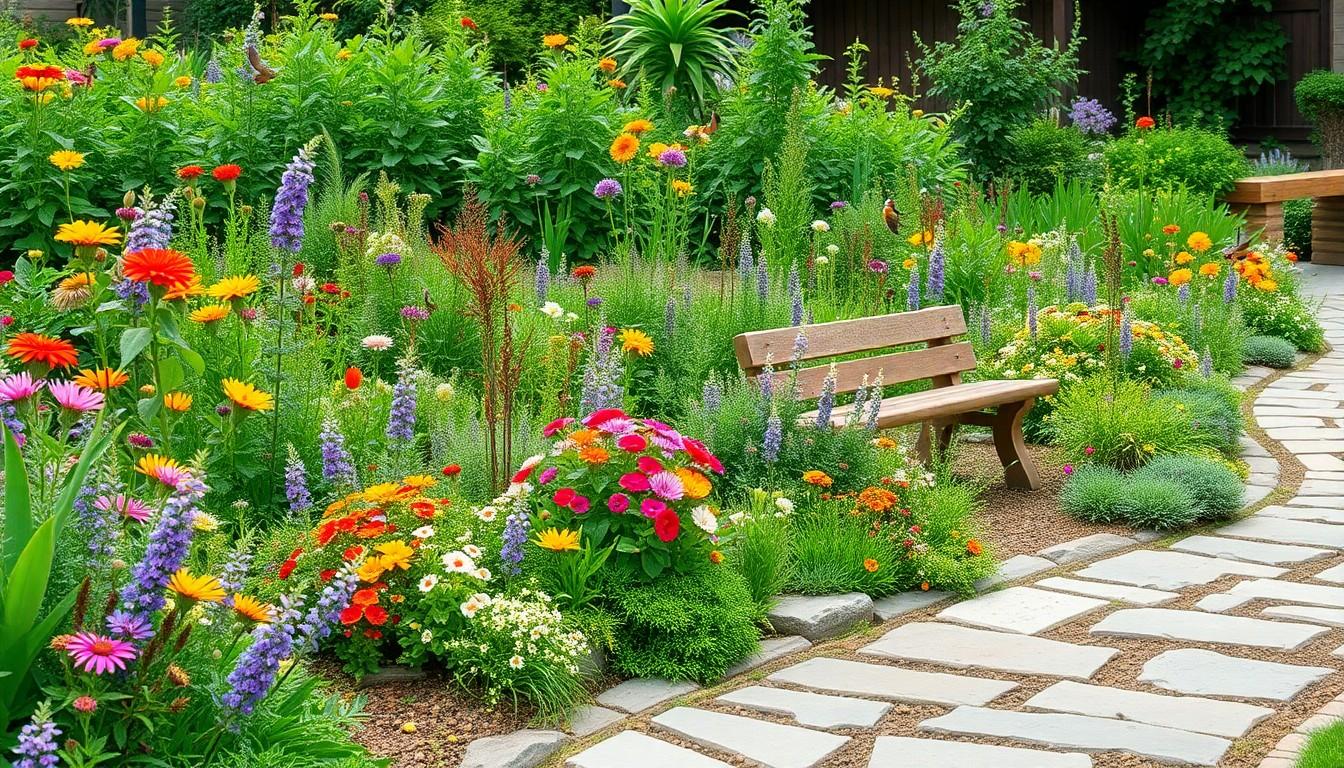Imagine stepping into your backyard and feeling like you’ve wandered into an enchanted forest. Natural edge landscaping can transform ordinary yards into stunning, eco-friendly havens that blend seamlessly with nature. Gone are the days of rigid lines and cookie-cutter designs. Instead, it’s all about embracing the wild beauty of your surroundings.
This innovative approach not only looks great but also benefits local wildlife and the environment. Think of it as giving Mother Nature a high-five while still keeping your lawn in check. With a little creativity and the right plants, anyone can create a landscape that feels both inviting and effortlessly chic. So why not ditch the traditional and let your garden reflect the untamed charm of the great outdoors?
natural edge landscaping
Natural edge landscaping focuses on creating outdoor spaces that integrate seamlessly with the surrounding environment. This approach emphasizes the use of organic shapes and native plants, allowing gardens to mimic the natural landscape. Such designs often feature gentle slopes, curves, and informal plant arrangements rather than rigid lines and geometric patterns.
Sustainable practices play a crucial role in this landscaping style. Designers prioritize using natural materials like stone, wood, and gravel, which enhance the organic look and reduce the carbon footprint. Local plant species are favored since they require less maintenance and support regional wildlife.
Creating habitats is a central goal of natural edge landscaping. These environments attract beneficial insects, birds, and other wildlife, fostering a balanced ecosystem. Landscapes designed this way not only beautify properties but also contribute to environmental conservation.
Homeowners can take various approaches when implementing natural edge landscaping. They might start by replacing traditional lawns with meadows or pollinator gardens. Using diverse plant selections enriches the visual appeal and enhances biodiversity, resulting in healthier garden ecosystems. Organic gardening techniques, such as composting and rainwater harvesting, complement this philosophy.
Natural edge landscaping encourages creativity and personal expression, inviting individuals to design spaces that reflect their values and connection to nature. By adopting this style, landscapes become more than just aesthetic; they transform into living, breathing ecosystems that enhance the quality of life and promote ecological health.
Benefits of Natural Edge Landscaping

Natural edge landscaping offers numerous advantages, making it a compelling choice for homeowners. This approach not only enhances beauty but also promotes environmental benefits.
Environmental Impact
Natural edge landscaping significantly contributes to ecological well-being. By using native plants, it supports local wildlife habitats, creating a thriving ecosystem. Biodiversity flourishes in these naturalistic environments, attracting pollinators like bees and butterflies. Sustainable practices associated with this landscaping method help maintain soil health and conserve water. Rainwater harvesting and composting further minimize environmental impact. Reducing chemical inputs lowers ecological harm, fostering a healthier planet.
Aesthetic Appeal
Natural edge landscaping brings an organic beauty to outdoor spaces. Curved lines and informal arrangements evoke a sense of tranquility and connection with nature. This style can utilize vibrant wildflowers and lush greenery to create visually stunning landscapes. Diverse plant selections ensure year-round interest and color, enhancing visual appeal. Homeowners can express creativity through carefully chosen plants and materials. Overall, this landscaping method transforms yards into serene retreats that invite relaxation.
Design Elements in Natural Edge Landscaping
Natural edge landscaping incorporates several design elements that enhance ecological value and aesthetic appeal. Its primary focus centers around native plants and sustainable hardscape features, contributing to a harmonious outdoor environment.
Plants and Vegetation
Diverse plant selections play a crucial role in natural edge landscaping. Native plants thrive in local conditions, requiring less maintenance and water. They also attract beneficial wildlife, such as pollinators, birds, and insects. Incorporating perennials, grasses, and wildflowers creates vibrant, colorful spaces. Layering plants, from ground covers to taller shrubs, adds visual depth. Furthermore, using plants that bloom at different times of the year ensures seasonal interest. Homeowners should prioritize local species for maximum environmental benefits.
Hardscape Features
Hardscape features complement the organic shapes found in natural edge landscaping. Materials like stone, wood, and gravel blend seamlessly into the landscape. Paths and seating areas can be made using permeable materials, allowing rainwater to recharge the soil. Curved pathways soften the layout, guiding visitors through the garden. Raised beds often define planting areas while preventing soil degradation. Incorporating natural rock formations can enhance visual appeal and functionality. These elements work together, creating a cohesive and inviting outdoor space.
Implementing Natural Edge Landscaping
Implementing natural edge landscaping involves careful planning and execution to create a seamless integration with the environment. Homeowners benefit from understanding their local ecosystem and selecting appropriate plants.
Planning and Preparation
Selecting native plants serves as a cornerstone for effective planning. These plants thrive in local conditions, reducing the need for extensive maintenance. Assessing the site’s sunlight, moisture, and soil type ensures that chosen plants will flourish. Creating a visual plan, including the arrangement of plants and hardscape features, promotes flow and functionality throughout the landscape. Formulating a budget also helps in managing costs, ensuring that selected materials align with sustainable practices.
Maintenance Tips
Monitoring plant health regularly ensures a vibrant landscape. Implementing organic gardening practices, such as mulching and composting, enhances soil health while reducing weeds. Watering efficiently, especially using rainwater collection systems, conserves resources. Encouraging biodiversity through companion planting strengthens the ecosystem and attracts beneficial insects. Pruning plants seasonally contributes to their longevity, allowing for fresh growth. Observing the changing seasons helps in timing replanting efforts and adds beauty throughout the year.
Natural edge landscaping offers a refreshing approach to outdoor design that prioritizes harmony with nature. By embracing organic shapes and native plants homeowners can create inviting spaces that attract wildlife and enhance biodiversity. This method not only beautifies properties but also contributes to environmental sustainability through reduced chemical use and improved soil health.
As individuals explore this creative avenue they’ll find opportunities to express their unique style while fostering a balanced ecosystem. The shift toward natural edge landscaping represents a meaningful step toward a more eco-friendly lifestyle that benefits both people and the planet. Embracing this philosophy can transform ordinary yards into serene retreats that inspire relaxation and a deeper connection with the natural world.

